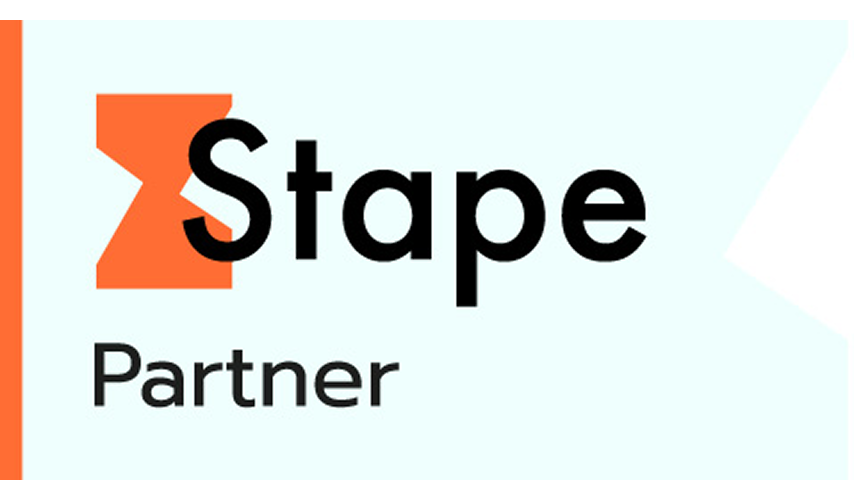To develop applications without programming; Low-code / No-code is that simple. This has big implications on the speed, flexibility and costs that go hand in hand with developing an application. A Low-code / No-code platform makes it possible to build a software application with hardly any coding. It is a popular and promising alternative to traditional software development, and it has grown remarkably fast during the last 5 years. Nowadays, there are Low-code / No-code platforms with which you can build almost everything you want.
Low-code / No-code allows larger companies with complex legacy systems to provide the business with new applications and workflows. Whilst smaller and medium-sized enterprises, lacking astronomical available budgets, are able to build the most beautiful solutions with Low-code / No-code. You build your business, web, and mobile applications for your organization in no-time.
As a Growth Marketing agency, we are completely sold and convinced by the power of Low-code / No-code. The advantages of Low-code / No-code are exactly what is needed in terms of conditions for success to realize growth for our customers. Growth Marketing demands speed, flexibility, and executive power, and with that the space to build and optimize funnels with as small a dependency on IT (read: programmers) as possible. With Low-code / No-code, this is now a reality.
What is Low-code / No-code?
So, with Low-code / No-code you are able to build web, (mobile) apps, and workflows without writing code.
I can hear you think: “Sure, that is too good to be true”, but I promise you, as soon as you have been able to experience the power of Low-code / No-code, you will want nothing else. A world of possibilities and (professional) benefits opens up in front of you. The currently existing No-code movement is there for a reason.
A number of years ago, Low-code / No-code platforms did not live up to the opportunities that custom-made work had to offer. Especially in terms of design, user-interface, and user-experience, the results of ‘drag-and-drop’-ish solutions looked weak.
Nowadays, that has totally changed. Low-code / No-code solutions can hardly be distinguished from custom-made solutions in those areas. The apps that are built on Low-code / No-code platforms are able to provide a similar complexity, and (functional) solutions as custom-made options are.
Okay, I admit, when you have an experienced designer and programmer develop a website or mobile app for you, there is no equal in terms of aesthetics. But if you compare the advantages of your Low-code / No-code solution with the disadvantages of custom-made work right now, then you would have to really think twice before you decide on the custom-made solution.
Do you make Lego bricks yourself?
When I want to provide my son Oli with a new Lego-project, I go to the shop. Never before did I think it a good idea to make the Lego bricks myself. Why would I? That is what Lego is good at.
The same principle goes for your next application or website. Why would you have a developer create all the building blocks when someone else has already done this for you?
That is more or less the workings of a Low-code / No-code platform. They have already programmed the necessary components for your next website or application for you. The only thing you have to do is make these components into a whole, in line with your (functional) wishes, and including the flexibility to add your own look and feel.
This makes the term Low-code / No-code somewhat confusing, because the components are built-up out of code. What is meant is that the user does not have to write any code to be able to build a website or applications.
When Oli wants to make a fire station or a police station again, then we are lucky that there is someone at Lego who has already made the design and instructions. The template is made-up by Lego. This is the case with Low-code / No-code solutions as well. You can use the components to make your own solution or you can choose a template.
Low-code / No-code platforms have developed rapidly these last few years. The reason why it is now taking off, is the fact that the number of available components, designs, and with that the (esthetic) quality, have increased enormously.
Just like with Lego, Low-code / No-code makes it easy for you to develop your solution and apply changes. The components can be taken apart and re-used, which makes flexible app and web design possible.
It also means that the development process is no longer limited to a small group of developers. Instead, it is expanded to a much larger community of designers and marketeers. This development is also called ‘the democratization of technology’.
The democratization of technology
It illustrates how technology is no longer the domain of a select number of specialists, but instead is owned by a larger community of users. This shift of power solves a number of fundamental – inter-linked – problems for companies and digital agencies.
An example of this is the current lack of talented and affordable developers, which is a bottleneck for many companies. This leads to an ever-increasing list of tasks and processes, ideas, workarounds, and frustrations. Instead, a ‘wish-list’ becomes a ‘wishful-thinking list’, which directly obstructs the growth of a company.
But with the expansion of Low-code / No-code platforms, a larger number of users is able to assist with implementing applications, websites, and workflows, whilst the team of developers can focus on core- and innovative technology development.
Low-code versus No-code
We speak about ‘no-code’ when you are able to build your application without writing one single line of code. To maintain a certain level of flexibility regarding custom-made work, some platforms make it possible to adjust and add code whilst building websites and applications. In that case we speak or ‘low-code’.
As a practical result of this, we see that growing communications exist around many low-code platforms, developing and sharing code solutions. This makes it easy to implement code changes yourself, or to ask for the help of an expert who can do that for you quickly in case the component in question is not available (yet) at the platform.
The benefits of Low-code / No-code
The commercial benefits of the Low-code / No-code development compared to custom-made work are huge. The major advantages are: simplicity, speed, flexibility, and with that, the low costs.
Because your Low-code / No-code platform has already provided the technical and functional components for you, the development process of your solution becomes significantly shorter and thus, faster. The time needed to build an application is hugely reduced, whilst changes in the existing applications can be made much faster. A number of time-consuming steps from the traditional development process are eliminated. The Low-code / No-code platform automatically generates and implements the code. That makes the risk of making mistakes during programming significantly smaller. As a whole, the amount of time and costs are greatly reduced compared to the traditional method.
Moreover, practically everyone is able to develop their own solutions with the help of platforms. For companies, that means that their marketing managers, sales representatives, HR managers, and every other employee is able to develop their own applications fast and easily. As a result, the busy IT department is relieved of additional development responsibilities and faster app development in the entire company is enhanced. In essence, the end-user of the application is able to become its maker.
The concept where everyone within a company, regardless of the formal skills for app development, is able to create their own solutions, is the entire goal of Low-code / No-code platforms. The non-professionals using Low-code / No-code platforms to develop applications, are called Citizen Developers.
By generating and facilitating citizen developers in your company, the development of business software at a rapid pace becomes a reality. Considering the high pace of modern professional life, extensive app development for automating and optimizing workflows and company processes through citizen developers is highly beneficial.
Apart from that, Low-code / No-code offers the needed flexibility with regards to further development and ownership of the application. Changes are remarkably easy to implement, also in areas where traditional app-development is very inflexible.
Fast and flexible
By visualizing business processes and developing applications based on what is seen by the end-user, complete business solutions can be made in a fraction of time. The time needed will reduce with a factor of 5 to 10 compared to traditional software development.
The drag-and-drop interface and prefab components make it extremely easy to work fast and to respond flexibly to external changes. Testing is usually automated as well, which makes the development process even less time-consuming.
Low-cost
Hiring software developers and testers is costly. With Low-code / No-code platforms professional software developers are redundant. You avoid the overhead of a development team on your payroll.
The number of providers specialized in developing Low-code / No-code solutions is rapidly growing. You can choose to train citizen developers within your company, or work together with a provider. Whatever you choose (a combination of the two often works best), the costs will be many times lower than what you have become used to for custom-made solutions.
Increased productivity
Faster and cheaper automatically means an increase in productivity. The interaction between a traditional IT team and the rest of the organization is often complex and time-consuming. A constant ‘translation’ of techniques to practical use is needed, and vice versa. People are waiting for each other. Small changes take a long time before they can be implemented.
With Low-code / No-code these problems no longer bother you and optimal productivity for every staff member becomes a reality.
Implementing changes is easy
Implementing changes whilst using traditional software is often a complicated and time-consuming job. With Low-code / No-code you are able to simply implement new logics. Implementing changes will take hours, instead of days or weeks.
Having said that, there are a few disadvantages, or rather focus points you should consider
The fact that Low-code / No-code development is an appealing proposal has become clear. Still, it is always good to be aware of the possible disadvantages, which are not as highly visible, but which can lead to problems in the future.
Foresight
As a Low-code / No-code platform user, you need to know what your requirements, or rather, your functional wishes, are. No Low-code / No-code platform is the same, and so you need to be absolutely sure of what you want in order to choose the platform that suits this best.
Also, your requirements might change over time, which means that the platform chosen by you no longer fits in perfectly. A risk to keep an eye on.
Limitation through templates
The number of templates offered by a Low-code / No-code platform is large and offers ample opportunities in the most common cases. However, the possibilities are never endless. There is a chance that you run into this limitation and that you will still have to deal with code to develop additions to your Low-code / No-code application.
Ownership of the source code
You are tied hands and feet to the provider of the Low-code / No-code platform of your choice.
For the survival of your application, you are dependent on the provider of the Low-code / No-code platform. In many cases you will not have access to the source code. If you want to make a different choice in regards to your application, that can become a complicated and also costly affair.
Safety
With Low-code / No-code you have little to no control over or in-depth knowledge of your app. This can lead to problems regarding safety and reliability. What happens when a provider of the Low-code / No-code platform gets hit by a security breach, which makes your, for your organization essential, system vulnerable? But also, what happens when the provider of the Low-code / No-code platform is taken over or goes bankrupt?
Low-code / No-code and Marketing
We, as a Growth Marketing boutique, are completely sold by Low-code / No-code. Why? Because especially in our line of business, we are expected to realize growth as fast and effectively as possible for the lowest possible price. What do we need for that? Flexibility in the technology and funnels we work with and build, to make testing and optimizing possible. I will share a few case-studies from real life.
Data-driven marketing with Low-code / No-code dashboarding of Google Data Studio
The first thing we do with our customers is to make data measurable and transparent. Imagine that we would have to do that within the systems of every single customer. Not only would we run into a high number of different solutions, we would also introduce a dependency on the IT staff within the company. In practice, that means two things: waiting and hassle. Our solution: we can build a suitable dashboard for the customer in no time using Google Data Studio. How do we incorporate the customer’s problems? Through the Supermetrics connectors.
Low-code / No-code websites with Squarespace
Testing and optimizing are key components of the work that we do. For that, being able to quickly implement changes to websites is a must-have. It is horrific for us to experience that half of our new customers are stuck with a website which does not offer the flexibility to implement changes.
With that I do not even mean the technical options. Of course, you can implement changes to your website. It is the dependency of the web development party which owns the website, which makes it inflexible. Expenses, expenses, expenses! And very often it takes a long time before a change is put through.
It is these high costs that make our customers understandably unhappy about website change after website change. On top of that, it often takes way too long.
Our solution? We build Low-code / No-code through Squarespace. One of these websites can be live and online in three to four weeks. No programmer is needed. After launching a website, only the marketers push the buttons and are able to implement every possible change to their websites themselves.
Project management and Scrum boards with Monday.com
In order to realize growth for our customers, we have developed our Growth Plan. This is a growth plan with which executive power is an important requirement for success. To reach executive power and a successful launch of the program, it is important that we own project management down to a tee. For that, flexible project planning is indispensable.
To be able to set up custom-made schedules for our customers, which also makes it possible to focus on time, costs, scope and quality, we use the Low-code / No-code solution Monday.com.
Monday.com delivers all components necessary for setting up a project management plan, scrum-boards, Kanban boards, content calendars, and more. It is child’s play through the drag-and-drop functionality.
Final word
Realizing online success is one of the most difficult things for an entrepreneur to do. Low-code / No-code removes a number of profound obstacles. Are you dealing with IT frustrations within your company? Is your website static and content management a hassle? Do you think that focus on data and performing weekly A/B tests is only realistic for larger organizations? Simply schedule a call with me, and let me convince you of the power of Low-code / No-code. A world of opportunities will present itself to you.
Do you generally think that your online marketing activities do not yield the results they should and do you not know very well how you should do it differently or better? Rest assured; you are not the only one.
We have the solution: we apply the Growth Plan to help our customers succeed with their online marketing. Do you want to learn more? Schedule a free Discovery Call today.

The SUM Brochure
Discover how we think, work and deliver. Inside, you'll find out how our way of working and the SUM Growth Model helps businesses like yours achieve results and grow predictably.






